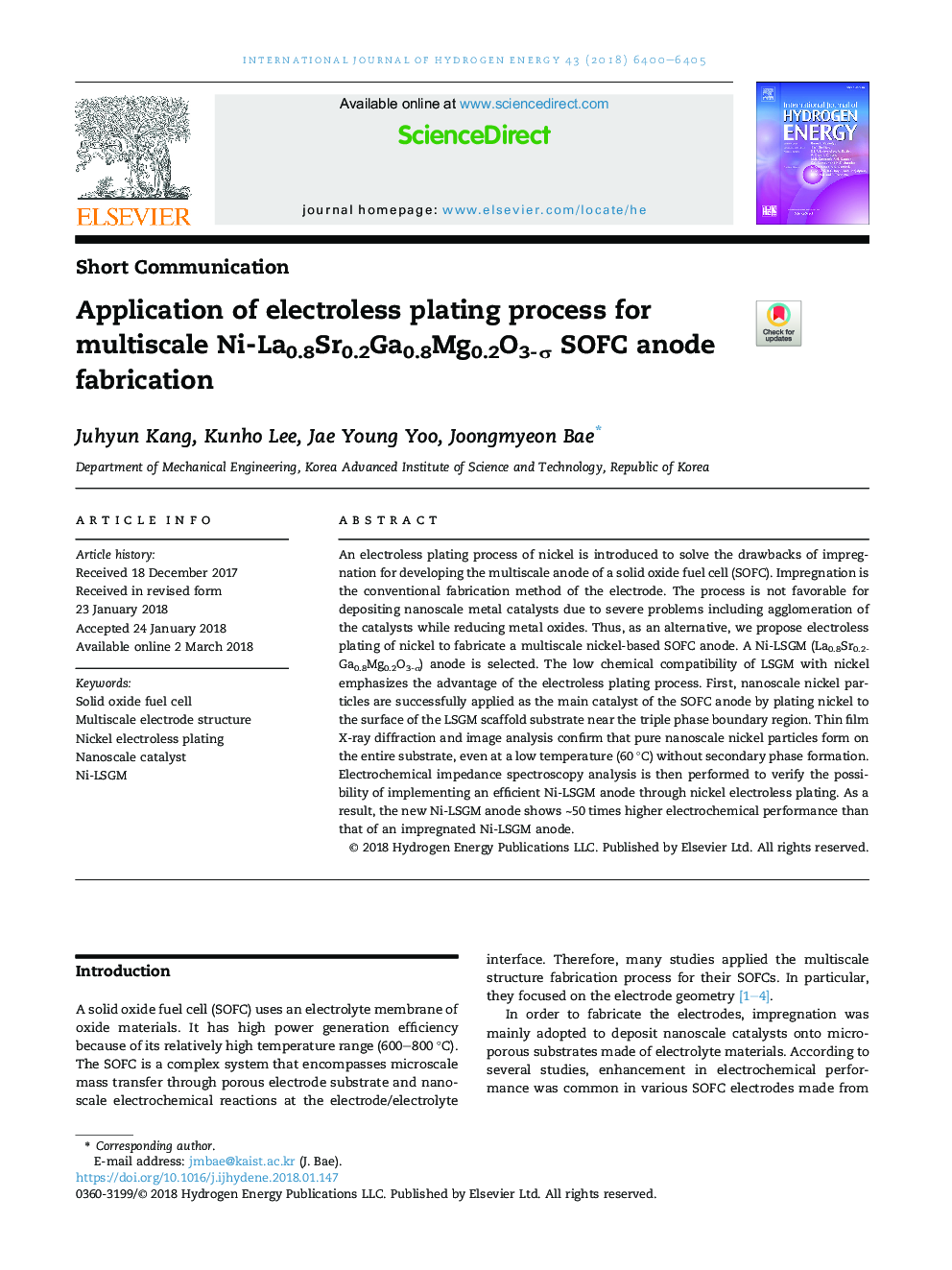| Article ID | Journal | Published Year | Pages | File Type |
|---|---|---|---|---|
| 7707107 | International Journal of Hydrogen Energy | 2018 | 6 Pages |
Abstract
An electroless plating process of nickel is introduced to solve the drawbacks of impregnation for developing the multiscale anode of a solid oxide fuel cell (SOFC). Impregnation is the conventional fabrication method of the electrode. The process is not favorable for depositing nanoscale metal catalysts due to severe problems including agglomeration of the catalysts while reducing metal oxides. Thus, as an alternative, we propose electroless plating of nickel to fabricate a multiscale nickel-based SOFC anode. A Ni-LSGM (La0.8Sr0.2Ga0.8Mg0.2O3-Ï) anode is selected. The low chemical compatibility of LSGM with nickel emphasizes the advantage of the electroless plating process. First, nanoscale nickel particles are successfully applied as the main catalyst of the SOFC anode by plating nickel to the surface of the LSGM scaffold substrate near the triple phase boundary region. Thin film X-ray diffraction and image analysis confirm that pure nanoscale nickel particles form on the entire substrate, even at a low temperature (60 °C) without secondary phase formation. Electrochemical impedance spectroscopy analysis is then performed to verify the possibility of implementing an efficient Ni-LSGM anode through nickel electroless plating. As a result, the new Ni-LSGM anode shows â¼50 times higher electrochemical performance than that of an impregnated Ni-LSGM anode.
Related Topics
Physical Sciences and Engineering
Chemistry
Electrochemistry
Authors
Juhyun Kang, Kunho Lee, Jae Young Yoo, Joongmyeon Bae,
